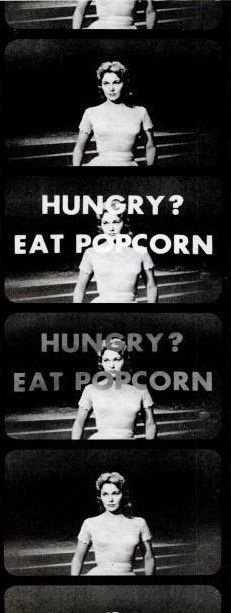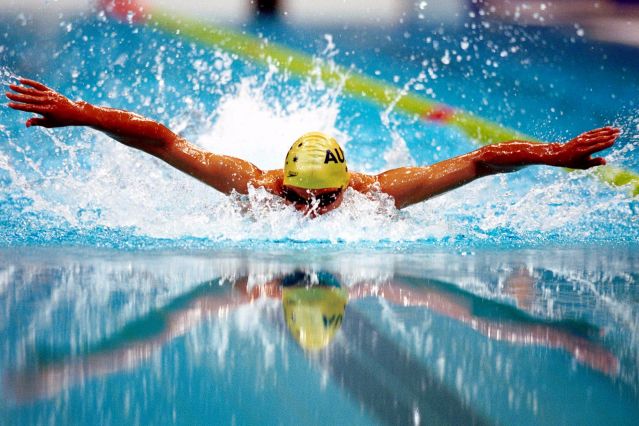Confidence
Subliminal Messages Can Fortify Inner Strength
Subliminal cues can reverse age stereotypes and increase your strength.
Posted April 20, 2015
.jpg?itok=56kPceaS)
Two recent studies on subliminal messages have found that subconscious visual cues can improve athletic performance and reduce negative age stereotypes of physical ability. The latest research shows that subliminal messages have the power to fortify your inner strength and boost self-confidence on and off the court.
Subliminal visual cues are words, pictures or symbols that are unidentifiable to your conscious awareness. Subliminal stimuli happens so quickly that it is literally "below the threshold" of your conscious mind.
Visual stimuli that is flashed for just a few milliseconds can be absorbed at a subconscious level before your conscious mind has time to interpret the incoming visual stimuli. The effect of subliminal messages can be positive or negative depending on the content of the messages being flashed before your eyes.
A Brief History of Subliminal Messaging

The concept of subliminal messaging took hold in the public consciousness after the 1957 publication of a book titled The Hidden Persuaders by Vance Packard. In his book, Packard introduces the idea of subconscious messaging that advertisers could use to influence consumers.
In the summer of 1957, James Vicary conducted an experiment on subliminal visual cues during screenings of the film Picnic. Every five seconds, Vicary flashed words like "Drink Coca-Cola" and "Hungry? Eat Popcorn!” for 1/3000th of a second—which is below the threshold of conscious perception. Vicary claimed that displaying these subliminal suggestions increased Coca-Cola sales by 18.1% and caused a 57.8% jump in popcorn sales.
Although the results of his study were dubious, in January of 1974, the Federal Communications Commission (FCC) banned subliminal advertising from radio and television broadcasting.
The official announcement by the FCC admitted that—even though they weren't 100% convinced that subliminal techniques were effective—they stated, "whether effective or not, they were contrary to the public interest, and that any station employing subliminal messages risked losing its broadcast license."
The two most recent studies on subliminal messaging show that subliminal visual cues do, in fact, have an effect on physical function, endurance, and inner strength.
Subliminal Visual Cues Can Renew a Youthful Sense of Self
The first recent study on the power of subliminal messaging was conducted at Yale University. The researchers at the Yale School of Public Health found that older individuals who were subliminally exposed to positive visual cues and stereotypes about aging showed improved physical functioning that lasted for several weeks.
The October 2014 study, “Subliminal Strengthening: Improving Older Individuals, Physical Function Over Time With an Implicit-Age-Stereotype Intervention,” was published in the journal Psychological Science.
For this study, the researchers used a unique method to examine whether exposure to positive age stereotypes could weaken negative age stereotypes and lead to more vitality and healthier outcomes.
Some of the participants were subjected to positive age stereotypes on a computer screen that flashed words such as "spry" and "creative" at speeds that were too fast to be picked up consciously. This is the first time that researchers have looked at whether positive age stereotypes, presented subliminally across multiple sessions in the community, might lead to improved outcomes.

In a press release, lead researcher Becca Levy PhD, associate professor and director of the Social and Behavioral Science Division at Yale said, "The challenge we had in this study was to enable the participants to overcome the negative age stereotypes which they acquire from society, as in everyday conversations and television comedies. The study's successful outcome suggests the potential of directing subliminal processes toward the enhancement of physical function."
During the experiment, positive age stereotypes and positive self-perceptions of aging were strengthened, and negative age stereotypes and negative self-perceptions of aging were weakened.
The researchers found that the subliminal intervention influenced physical function through a chain reaction of positive effects: First it strengthened the subjects' positive age stereotypes, which then strengthened their positive self-perceptions, which then improved their physical function.
The improvement in these outcomes continued for three weeks after the last intervention session. Most importantly, negative age stereotypes and negative self-perceptions of aging were weakened.
On a cautionary note, the negative age stereotypes and subliminal messages that each of us absorb non-consciously every day through advertising and other streams of media can lead to lower self-esteem. If left unchecked, this can create a snowball effect and downward spiral that saps your inner strength and self-confidence.
Subliminal Messages Can Reduce Perceptions of Effort and Increase Endurance

The second study was conducted by Professor Samuele Marcora at the University of Kent in collaboration with colleagues at Bangor University. In this experiment the researchers flashed subliminal cues, such as action-related words or happy vs. sad faces on a digital screen while endurance athletes were exercising on a stationary bicycle.
Their December 2014 study, “Non-Conscious Visual Cues Related to Affect and Action Alter Perception of Effort and Endurance Performance,” was published in the journal Frontiers in Human Neuroscience.
The subliminal words and faces appeared on a digital screen for less than 0.02 seconds and were masked by other visual stimuli making them unidentifiable to the participant's conscious mind. When the athletes were presented with positive visual cues like "go" and "energy" or were shown happy faces they were able to exercise significantly longer compared to those who were shown sad faces or words linked to inaction.
This research is the first to demonstrate that subliminal visual cues can impact athletic performance. Additionally, the researchers found that the Rating of Perceived Exertion (RPE) can be affected, for better or worse, by subliminal cues when you exercise.
Professor Marcora is currently exploring ways in which this research could open up new possibilities for athletes to improve their performance by using technology, such as 'smart glasses', to provide positive subliminal cues during training and competition.
Conclusion: Self-Perceptions Can Be Anything You Imagine Them to Be
I learned about the power of subliminal messaging through trial-and-error as an ultra-endurance athlete out in the field. I've written extensively about how-to use positive subliminal messaging to improve performance in The Athlete's Way. It's exciting to see scientists proving the benefits of non-conscious visual cues—on and off the court—for people from all walks of life through empirical research.
If you'd like to read more on this topic, check out my Psychology Today blog posts:
- “New Clues on the Inner Workings of the Unconscious Mind”
- “The Neuroscience of Knowing Without Knowing”
- “New Clues on Rewiring Your Brain”
- “Imagination and Reality Flow Conversely Through Your Brain”
- “Imagination Can Change Perceptions of Reality”
- "Alpha Brain Waves Boost Creativity and Reduce Depression"
© Christopher Bergland 2015. All rights reserved.
The Athlete’s Way ® is a registered trademark of Christopher Bergland.
Follow me on Twitter @ckbergland for updates on The Athlete’s Way blog posts.




